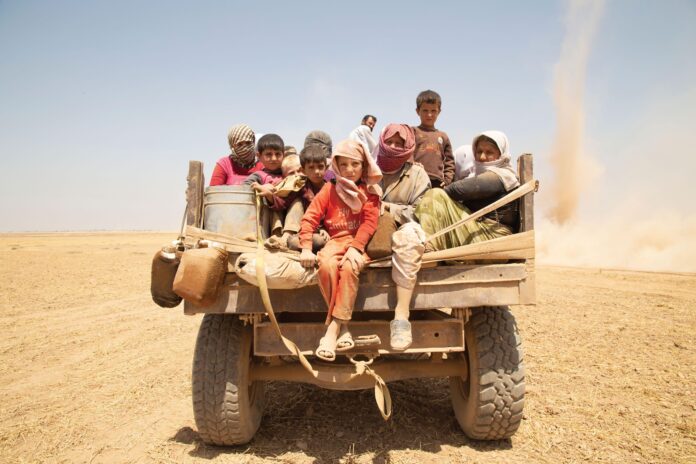The traditions and art of women survivors of the Yazidi genocide have been collected into a group of archives, hosted by the United Nations (UN) on the Google Arts & Culture platform. The result of a year-long series of workshops in northern Iraq, the Yazidi Cultural Archives aim not simply to document the traditions of the small ethnic minority. Crucially, they address the mental-health crisis now gripping the Yazidi community, which has manifested itself in high rates of depression, post-traumatic stress disorder and suicide.
The Yazidi Cultural Archives is launching today at the headquarters of the Iraq-based NGO, Yazda—a lead partner in the project—in Duhok, Iraq and at the Institut du Monde Arabe in Paris. Available in English and Arabic, they comprise four permanent online exhibitions of works, photography and films created by 16 female Yazidi survivors.
In 2014 the Yazidis living in Iraq were targeted by Islamic State, in what the UN and other governments have recognised as a genocide. According to the UN, in August 2014, Isis killed 5,000 Yazidi men and kidnapped 7,000 Yazidi women and girls. Around 50% of the Yazidi community was displaced, or around 360,000 people in total. Around 200,000 Yazidis remain in camps today.

NGO Yazda held painting and photography workshops for women survivors; their art was used to create four permanent online exhibitions © Yazidi Cultural Archives
“The project builds on research that was done in Rwanda after the genocide, which found that archiving plays a role in addressing mental health recovery,” explains George Richards, the director of Community Jameel, one of the partners on the initiative.
“Where the community feels that their cultural identity is at risk, and then they suffer something as traumatic and devastating as genocide, the archiving of their heritage provides recognition of their cultural identity. And that in itself helps to strengthen the recovery of the community from the genocide, because they know that they are being seen, as we would say nowadays.”
The project was spearheaded by Yazda in collaboration with Community Jameel, the UN, and the arts organisation Culturunners. Additional support and guidance was provided by the WHO Arts & Health Program, Open Mind Project and the NGO Nobody’s Listening. Yazda held workshops for the female survivors from 2021 to 2022, in which the women produced paintings and photography reflecting on the event.

© Yazidi Cultural Archives
Survival strategies
Other archived cultural forms reveal survival strategies during the war. Tattooing, for example, was once a traditional practice among the Yazidis but had been ebbing in popularity. But during the takeover, many younger women began tattooing themselves, hoping that it would make them less likely to be taken into captivity, as tattooing is haram (forbidden) in Isis’s strict interpretation of Islam. “Instead of tattooing themselves with the traditional motifs, they tattooed themselves with the dates on which they were taken, or the names of villages that had been destroyed, or the names of male loved ones who had been killed,” says Richards.
“Suddenly, the tattooing took on this new significance for the Yazidi community. It had this very real, almost defensive purpose in captivity. So, in this case, our recording of the traditional tattooing has this secondary relevance to the survivors [in comparison to its new significance], and it’s the survivors who created the archive.”
“The women who created this archive chose to affirm their identity by documenting Yazidi customs and traditions for future generations,” says Nisha Sajnani, the founding director of arts and health at New York University, another project partner. “In doing so, they reflect the strength, dignity and vitality of their community.” The partners also plan to evaluate the programme’s effectiveness. This will enable them to develop evidence-based policies for treating communities affected by conflict, for bodies such as the UN.

























